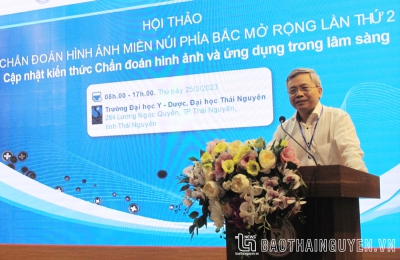Thông báo khai giảng khóa đào tạo ngắn hạn
Trường Đại học Y - Dược, nhà cái uy tin tại việt nam thông báo khai giảng khóa đào tạo ngắn hạn "Phục hồi chức năng"
- Kế hoạch tuyển sinh và xét công nhận giá trị chuyển đổi tương đương của các học phần trong đào tạo học cùng lúc hai chương trình trình độ đại học năm 2023
- Kỷ niệm 55 năm thành lập Trường Đại học Y - Dược, nhà cái uy tin tại việt nam
- Chủ tịch Đỗ Văn Chiến dự Lễ Kỷ niệm 55 năm thành lập Trường Đại học Y - Dược Thái Nguyên
- Trường Đại học Y - Dược, nhà cái uy tin tại việt nam kỷ niệm 55 năm thành lập
- Kỷ niệm 55 năm Ngày thành lập Trường Đại học Y-Dược Thái Nguyên
Thông báo khai giảng khóa đào tạo ngắn hạn
Trường Đại học Y - Dược, nhà cái uy tin tại việt nam thông báo khai giảng khóa đào tạo ngắn hạn "Phục hồi chức năng"
- Kế hoạch tuyển sinh và xét công nhận giá trị chuyển đổi tương đương của các học phần trong đào tạo học cùng lúc hai chương trình trình độ đại học năm 2023
- Quyết định công nhận trúng tuyển đào tạo trình độ tiến sĩ đợt xét tuyển tháng 10 năm 2023
- Quyết định công nhận học viên đào tạo trình độ thạc sĩ khóa 2023 - 2025 (đợt tuyển sinh tháng 10 năm 2023)
Thông báo kết quả tuyển dụng lao động hợp đồng đợt 2, năm 2022
Trường Đại học Y - Dược, nhà cái uy tin tại việt nam thông báo kết quả tuyển dụng lao động hợp đồng đợt 2, năm 2022
Hội thảo chẩn đoán hình ảnh miền núi phía Bắc mở rộng
Ngày 25-3, Trường Đại học Y - Dược (nhà cái uy tin tại việt nam ) phối hợp với Hội Điện quang và Y học hạt nhân Việt Nam tổ chức Hội thảo chẩn đoán hình ảnh miền núi phía Bắc mở rộng lần thứ 2 với chủ đề “Cập nhật kiến thức chẩn đoán hình ảnh trong thực tế lâm sàng”. Tham dự Hội thảo có các nhà nghiên cứu, chuyên gia, các bác sĩ, giảng viên, cán bộ, học viên, sinh viên đang công tác, học tập trong lĩnh vực chẩn đoán hình ảnh.
Thông báo tuyển chọn sinh viên tham gia chương trình trao đổi sinh viên với Trường Đại học Ubon Ratchathani, Thái Lan (Từ ngày 16/7/2023 đến ngày 26/7/2023)
Trường Đại học Y Dược, nhà cái uy tin tại việt nam thông báo tuyển chọn sinh viên tham gia chương trình trao đổi sinh viên với Trường Đại học Ubon Ratchathani, Thái Lan (Từ ngày 16/7/2023 đến ngày 26/7/2023)
- Trường Đại học Y - Dược, nhà cái uy tin tại việt nam tổ chức thành công Hội thảo quốc tế về chủ đề: “Bệnh lý Thần kinh - Cơ”
- Ban hành Quy định về quản lý việc ra nước ngoài của công chức, viên chức và người lao động thuộc nhà cái uy tin tại việt nam
- Ban hành Quy định về quản lý người học tập ở nước ngoài của nhà cái uy tin tại việt nam
Danh mục vị trí việc làm của Trường Đại học Y - Dược, nhà cái uy tin tại việt nam
Nghị quyết phê duyệt đề án vị trí việc làm Trường Đại học Y - Dược, nhà cái uy tin tại việt nam





.jpg)
.png)






